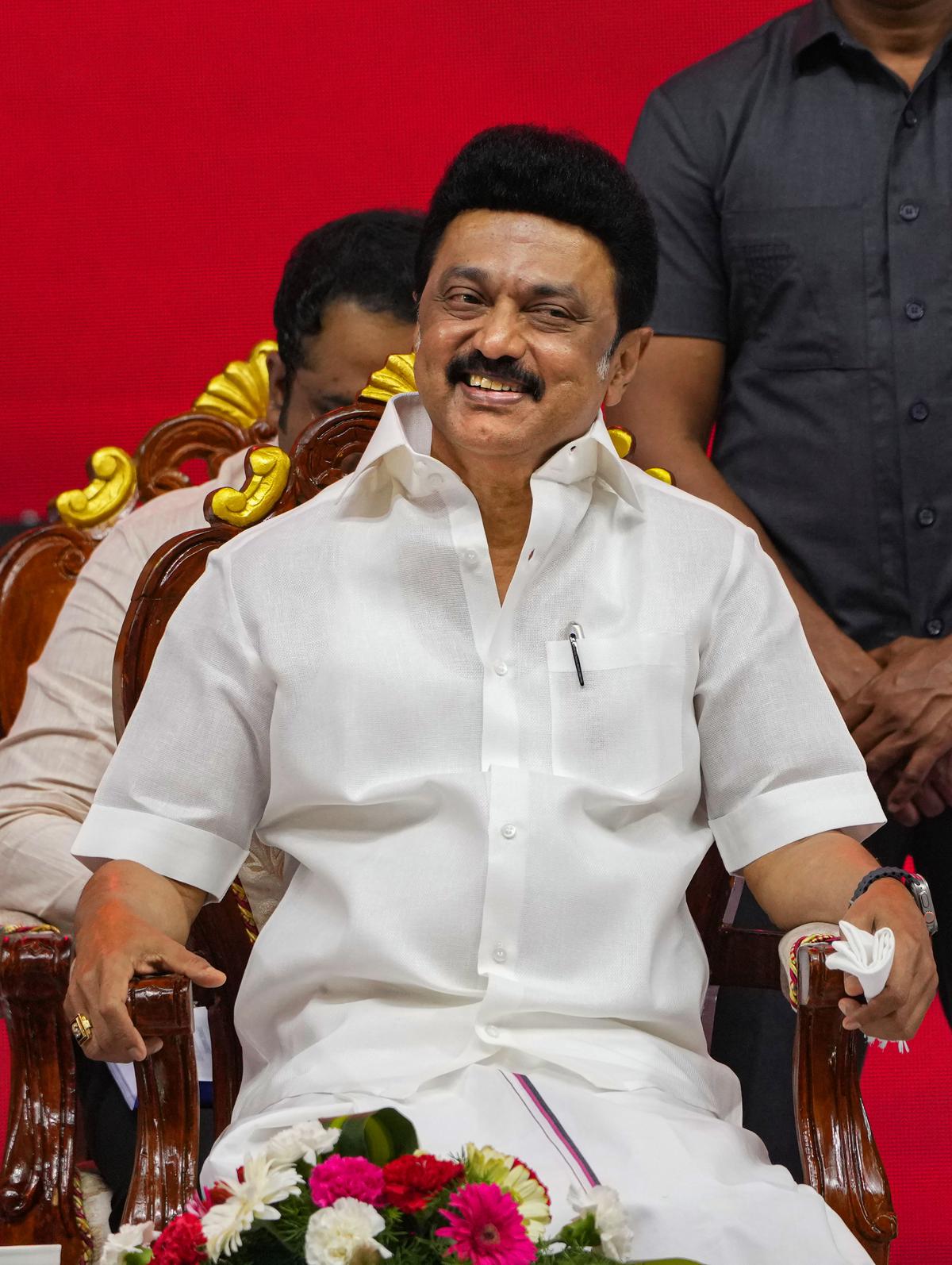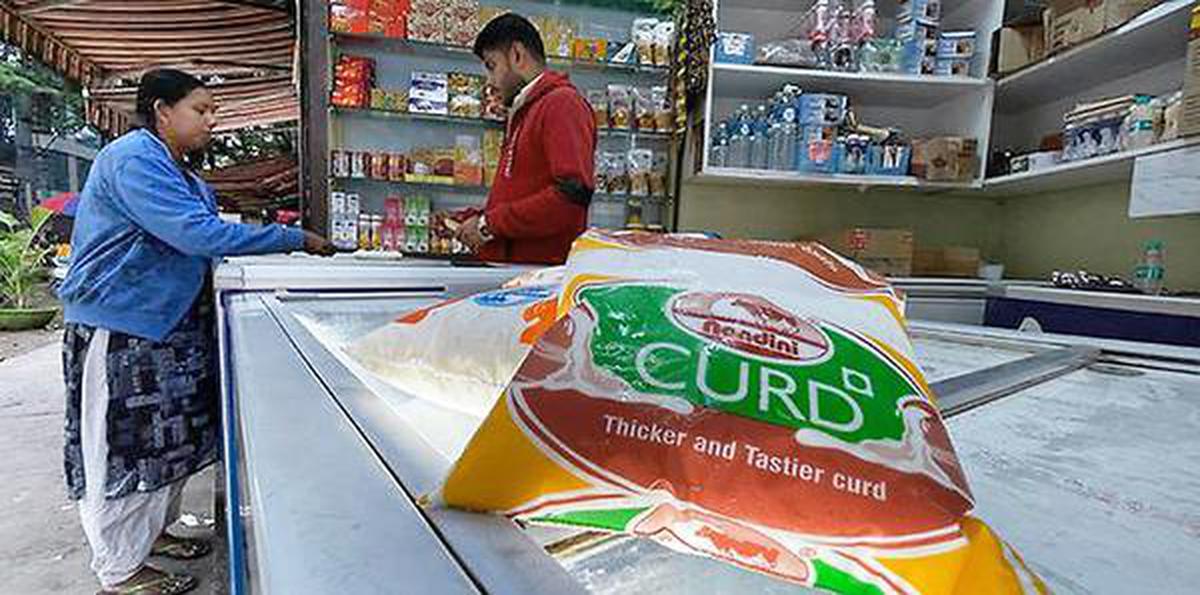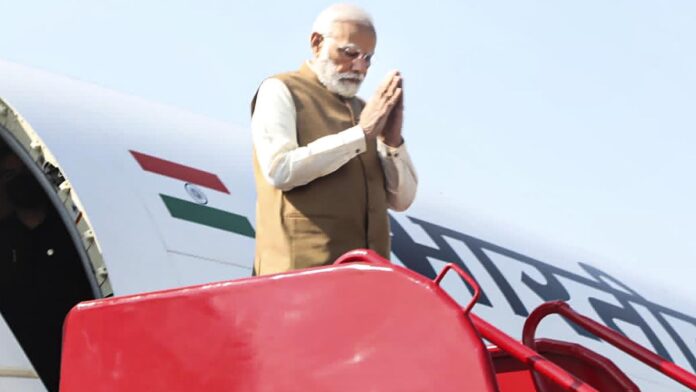(The Political Line newsletter is India’s political landscape explained every week by Varghese K. George, senior editor at The Hindu. You can subscribe here to get the newsletter in your inbox every Friday.)
Parties that are opposed to the BJP, and particularly Prime Minister Narendra Modi are also opposed to one another, and are quite often more interested in defeating a non-BJP party than the BJP itself. They represent divergent interest groups and are driven by contesting ideological positions. There are five different strands of opposition to the BJP.
Regional elites have a vantage point from which the BJP and the Congress are not radically different: the Dravida Munnetra Kazhagam (DMK) in Tamil Nadu, the Shiv Sena factions in Maharashtra, the Trinamool Congress (TMC) in West Bengal, the Bharat Rashtra Samithi (BRS) in Telangana, all can be with the BJP or the Congress, depending on the situation and context. Most of them see the BJP as a bigger threat to their interests at this moment, but that does not mean that the regional elites find a natural ally in the Congress. They negotiate with both.
The TMC and the Congress are locked in a battle in West Bengal. In fact, in the upcoming local body polls there are speculations regarding an ‘adjustment’ among the Left, the Congress, and the BJP — yes, you read that right — against the TMC. Mamata Banerjee, TMC leader and West Bengal Chief Minister (CM), went all guns blazing against the BJP this week, attacking the saffron party’s “feudal” attitude towards the State. She called for opposition unity to oust the BJP from power.

Tamil Nadu Chief Minister MK Stalin at a public meeting.
| Photo Credit:
R Senthil Kumar
Tamil Nadu Chief Minister M.K. Stalin, and leader of the DMK, has called a meeting on social justice in Chennai next week, to which nearly all non-BJP parties have been invited. The conference is billed “non-political” — whatever that means. Regional elites claim a certain ideological ground for legitimacy: language pride is a common factor in Tamil Nadu, Maharashtra, and West Bengal. The BRS, which has shed Telangana from its original name to project a pan-India presence, is advancing a farmer-centric agenda as its ideological plank.
Secularism is not a reference point for regional interest groups — all the above parties have had direct or indirect alliances with both the Congress and the BJP at various points. They are driven by a determination to obtain the maximum autonomy from Delhi.
The second vantage point is of an apolitical, ideology-free opposition to the BJP that is represented by Arvind Kejriwal of the AAP. He has no opposition to the Hindutva agenda of the BJP at all, but has declared an open war on Prime Minister Narendra Modi. Mr. Kejriwal has turned governance into a service delivery platform, citizens into consumers, and would be comfortable in any ideological setting. He appears a centralising authoritarian who wants to concentrate all power with the national government at times, but can also espouse federalism bordering on separatism when the situation demands.
Delhi Chief Minister Arvind Kejriwal addressing the media.
| Photo Credit:
Sushil Kumar Verma
A third vantage point of opposition to Mr. Modi is of dominant middle castes in the Hindutva heartland: the Yadavs of U.P. and Bihar, the Jats of U.P., Haryana, and Rajasthan. The dynamics here are different from the relationship between the regional elites and national parties, but there’s one thing in common: both the Congress and BJP are viewed with suspicion. There are parties that represent this group: the Samajwadi Party (SP), Rashtriya Janata Dal (RJD), Rashtriya Lok Dal (RLD). Segments of these communities are also associated with the BJP and the Congress through individual leaders. These parties do not necessarily oppose the BJP for its religious nationalism, but oppose the upper caste prominence in the Hindutva scheme of things.
The BJP has been able to blunt this line of attack against it through its own direct outreach to these dominant communities on the one hand, and isolating them on the other hand, through the mobilisation of other minor backward communities. From the vantage point of these parties and communities, there is little different between the Congress and the BJP.
The fourth vantage point is that of the constitutional liberals. They are out of touch with the masses in the Hindi heartland, and the Congress is their party at the national level. They recirculate texts on constitutional liberalism, individual rights, integrity of institutions. This framework has no electoral relevance in India at this moment.
In States where interest groups use the Congress as a vehicle — Karnataka, Kerala, and Maharashtra — the party has electoral appeal. That has little to do with these high principles of democracy. Constitutional liberals are opposed to the BJP, but they are also sceptical of the other vantage points. They are not together everywhere; the Congress and the Left are the principal rivals in Kerala though they are allies in most other parts of the country.
A fifth vantage point is that of religious minorities, primarily the Muslim, Sikhs, and Christians. In some cases they try their own parties; in others, they join hands with the regional elites, dominant castes, constitutional liberals, or the apolitical paratroopers.
From all these vantage points, the BJP appears to be the bigger enemy than the Congress at the moment. But that does not mean their mutual contradictions have been overcome, or there is a meeting of minds, or that the convergence is neat and universal.
Among regional elites, the Biju Janata Dal (BJD) of Odisha, and the Yuvajana Sramika Rythu Congress Party (YSRCP) of Andhra Pradesh think they have no dog in this fight and keep silent; Christians in Kerala and Nagaland are looking at the BJP as an option; and most importantly the groups cited above undermine each other to the advantage of the BJP. The AAP queered the pitch for the Congress in Gujarat and the TMC did the same in Goa, paving the BJP’s path to victory. Asaduddin Owaisi’s All India Majlis-e-Ittehadul Muslimeen contests elections across the country undermining other anti-BJP parties.
The interplay of these five vantage points will determine the scope and strength of the Opposition to the BJP in 2024. That is the big picture.
Federalism Tract: Notes on Indian Diversity

A packet of curd on sale at a milk booth in Bengaluru. File Photo The Hindu
| Photo Credit:
The Hindu
Dahi returns to brackets in the south
A recent order of the Food Safety and Standards Authority of India that curd packets marketed by milk federations in Karnataka and Tamil Nadu must prominently carry dahi, the Hindi word for curd, led to an uproar. The order is now withdrawn, after allegations of imposition of Hindi surfaced.
Khalistan campaign returns?
After the Punjab police launched a coordinated crackdown against the Dubai-returned radical preacher, Amritpal Singh and his associates on March 18, there is rising concern about a revival of the Khalistan movement in Punjab. Listen to a discussion on the issue or read the transcript here.
#Political #Line #Big #Picture #vantage #points #opposition #Narendra #Modi
